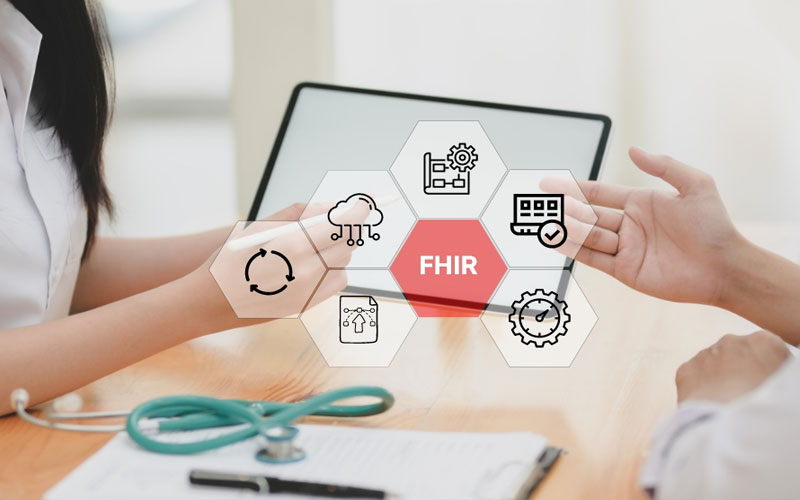If you’re wondering why FHIR is the next big thing? Check the FHIR overview then consider the benefits it offers users: First, FHIR is extensible. With its standardized format, developers can build applications that work with multiple systems. It reduces the number of applications that users need to download. Next, FHIR allows patients to become part of their healthcare team, helping them make better decisions. Lastly, healthcare organizations reduce costs by extending the value chain.
Table of Contents
Resources
As a standard for health data exchange, FHIR is designed with Internet use in mind. The key is that it is based on the concept of resources, which can be any type of human-readable part or representation. The format must be based on JSON, XML, Atom, HTTP, and OAuth standards. FHIR is aimed at creating a framework for all systems to interpret.
The basic structure of FHIR is similar to that of a Big Mac. Resources are generic descriptions of common health care concepts. In addition, FHIR supports RESTful resource exchange, allowing systems to communicate with each other without requiring any special skills. Its use in healthcare data exchange is a massive advantage over other standard health information exchange formats. But the benefits of FHIR are often overlooked. Its open-source nature makes it a popular choice for developers worldwide. In addition to robust documentation, FHIR is freely available. However, FHIR adoption and penetration vary from country to country.
Performance with REST web services
Scalability is a critical component of REST Web services. When using service topology, clusters of servers route requests between them; this reduces the overall response time for a Web service call. However, this design requires intermediary servers to handle all the data needed to fulfill requests and load balance. If you have no idea how to scale your service, you may want to read up on these problems and how to avoid them.
One of the most common problems REST-based web services face is poor performance. For example, the server’s load can be too high, while too few requests can negatively impact performance. A benchmarking tool will help you identify problems before they become real problems. Using a performance test tool to test the performance of your RESTful API will help you identify issues before they arise. It will also provide a baseline to measure how well your new service scales and handles multiple concurrent users.
API’s
APIs are the fundamental building blocks of the FHIR standard. They govern interaction and communication between different applications. These APIs allow healthcare systems to connect with one another without relying on complicated document-centric models. The APIs enable healthcare systems to retrieve and manipulate essential healthcare elements using resource URLs. The 21st Century Cures Act, which governs the health care industry, has required all systems to implement FHIR by the end of 2021. This mandate also requires using FHIR APIs for Provider Directory and Patient Access.
With FHIR, developers can develop standardized browser applications that access patient information. They can also connect to the data no matter which EHR operating system the application runs on. An FHIR resource is an individual packet of information that may include text, metadata, or particular data elements. It can also be bundled into collections of clinical documents, similar to the Consolidated Clinical Document Architecture. As an added benefit, FHIR-compliant resources have standard URLs pointing to the same data version.
Comprehensiveness
Fast Healthcare Interoperability Resources (FHIR) is a long-awaited standard for health information exchange. The goal is to make health data interchange easy and seamless. The new standard is the basis for real-time, coordinated care by breaking down data silos. The Office of the National Coordinator for Health IT (ONC) and CMS are finalizing the rules to make it possible. With the outbreak of COVID-19 and the changing landscape of healthcare payment, the need for interoperability has never been higher.
The FHIR standard was introduced in 2011 and slowly spread across the healthcare industry. The patient data avalanche was organized in late 2011 by Health Level Seven International, a nonprofit organization dedicated to interoperability. Over time, the FHIR standards have been refined and expanded. Arcadia’s Senior Director of Product, Dan Szabo, is fluent in FHIR and explains the benefits.
Cost
The cost of FHIR varies widely. Three factors affect its cost, the different purposes of FHIR, and how it can be used: It will help healthcare organizations improve patient engagement, develop population health management programs, and dive into intelligent clinical decision support. The Open Network for Healthcare (ONC) and prominent commercial players in the health IT industry are enthusiastic supporters of the standard. However, we should consider some things before making a final decision.
First, let’s look at the number of requests an FHIR-based application generates monthly. In a month, it sends over 25 million requests. These average four kB per resource, but five million of them are classified as Complex Requests. Similarly, an imaging center maintains 160 GB of images and 6.4 GB of parsed meta tags. That’s a lot of storage.
Implementation timeline
The implementation timeline for FHIR is a long-term process. While the initial development of FHIR focuses on creating a formal information model for healthcare, converting existing data models into FHIR is a multi-step process. In addition to creating a formal model, organizations must modify their existing data dictionary to conform to the new standard. The mapping team needs to adjust existing data models, such as implicit data modeling. The mapping team will need a data dictionary to change this data modeling to an FHIR-compatible model. WHO clinical guidelines experts also assisted with this data remodeling process.
The development of FHIR follows a similar process to that of HL7v3 and HL7v2. It values consensus, and blaring errors are most likely to be identified before the final standard is published. FHIR aims to standardize the exchange of health information among healthcare organizations. Implementation timelines for FHIR are mapped out based on these standards, but organizations must ensure they have plans to implement them.








